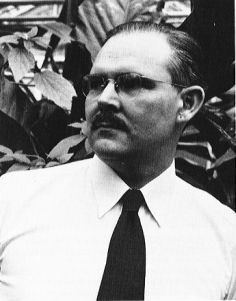Name John Curtis Died June 7, 1961 | ||
 | ||
Institutions University of Wisconsin Alma mater University of Wisconsin Known for Bray-Curtis dissimilarityseminal papers on ecological gradient analysis Education University of Wisconsin-Madison (1937) Books The vegetation of Wisconsin, Plant Ecology Workbook: Laboratory Field and Reference Manual Awards Guggenheim Fellowship for Natural Sciences, US & Canada | ||
John Thomas Curtis (September 20, 1913 – June 7, 1961) was an American botanist and plant ecologist. He is particularly known for his lasting contribution to the development of numerical methods in ecology. Together with J. Roger Bray, he developed the method of polar ordination (now known as Bray-Curtis ordination) with its inherent distance measure, the Bray-Curtis dissimilarity.
Curtis completed his Ph.D. in botany at the University of Wisconsin in 1937. He remained affiliated with that university for the remainder of his career, except through 1942–1945, when he served as research director of the Société Haïtiano-Américaine de Développement Agricole. Both in 1942 and in 1956, he was awarded Guggenheim Fellowships. In 1951 he was made full professor of botany at the University of Wisconsin.
The collective efforts of Curtis and the thirty-nine Ph.D. students that he managed to supervise during his relatively short career, resulted in the work ‘’’The Vegetation of Wisconsin: An Ordination of Plant Communities, published 1959. This book remains one of the important contributions to the field of plant ecology during the twentieth century, and spawned the Wisconsin School of North American plant ecology.
